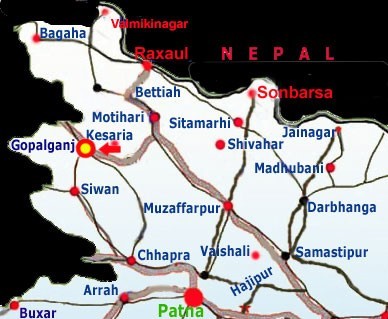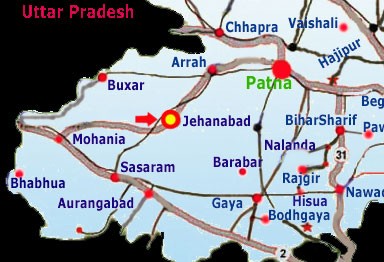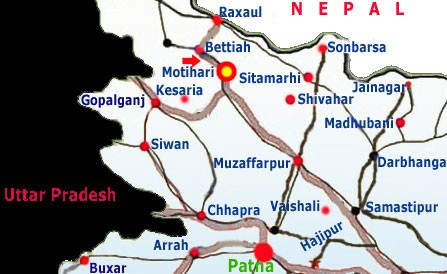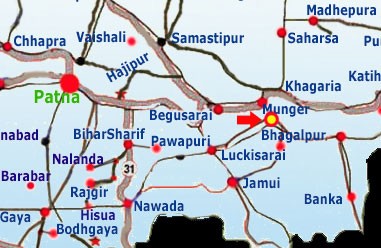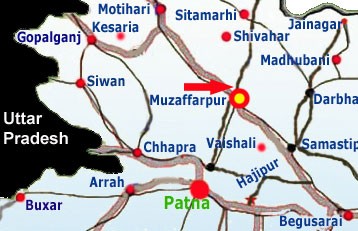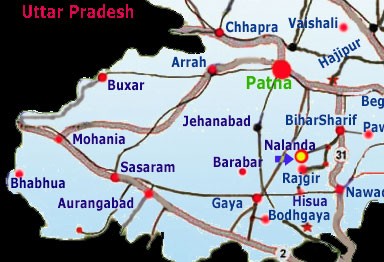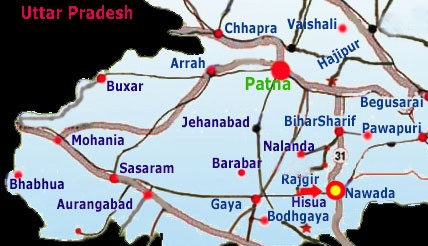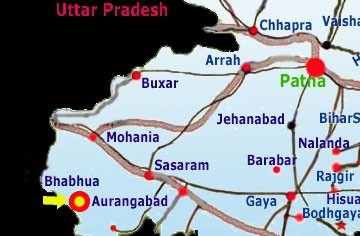Story of Anti-Bihari
sentiment in India
Bihari refers to the people of the Indian state
of Bihar, which is a region in the north-eastern Gangetic plains (as well as
people of the Bihari ethnic group that originated there). Bihar has had
slower economic growth than the rest of India in the 1990s, and as a consequnce
many Bihari’s have migrated to other parts of India in search of work. Bihari
migrant workers have been subject to a growing degree of xenophobia, 1] racial
discrimination, prejudice and violence. Biharis are often looked
down upon and their accent ridiculed. In 2000 and 2003, anti-Bihari
violence led to the deaths of up to 200 people and created 10,000
internal refugees.
Causes
Since the late 1980s and through to 2005, poor
governance and Annual Flooding of Bihar by Kosi River (Sorrow of Bihar)
contributed to a crisis in the Bihar economy. 9] The criminalisation of
politics, and kidnappings of professional workers between 1990-2005 contributed
to an economic collapse and led to the flight of capital, middle class
professionals, and business leaders to other parts of India. 10] 11] This
flight of business and capital increased unemployment and this led to the mass
migration of Bihari farmers and unemployed youth to more developed states of
India. The state has a per capita income of $148 a year against India’s
average of $997 and 30.6% of the state’s population lives below the poverty
line against India’s average of 22.15%. The level of urbanisation (10.5%) is
below the national average (27.78%); and behind states like Maharastra (42.4%).
Urban poverty in Bihar (32.91%) is above the national average of 23.62%. 1
Also using per capita water supply as a surrogate variable, Bihar (61 litres
per day) is below the national average (142 litres per day) and that of
Maharastra(175 litres per day) in civic amenities.
Impact: Social
and cultural
There is a perception in Indian states with
smaller populations that Bihari culture could dominate local languages and
customs as migration of poor workers continue from those states. This feeling
that local customs would be overwhelmed by migrants was a key feature of the
MNS campaign in Maharashtra and feelings of resentment in Punjab. 13] 14]
The migrant population in Punjab, according to state researchers, is nearing
three million out of a total population of over nearly 30 million. One third of
the migrants, nearly one million, live in and around Ludhiana. 15] After
the attacks on Uttar Pradeshi’s and Biharis in October 2008, a Punjabi group
called the Dal Khalsa, carried banners and placards that read Punjab for
Punjabis and Return migrants, Save Punjab . This fear is further
personified by the rise of Bhojpuri cinema in non-Bhojpuri speaking states.
Punjabi comedian Jaspal Bhatti said that instead of assimilating with the
culture of the state, the migrant population was seeking to decimate Punjabi
culture and cinema. In Mumbai, Raj Thackeray had also complained to
theatre owners for their reluctance to exhibit Marathi movies and producers of
Marathi movies complained that it is becoming difficult to hire theatres in
Mumbai to release their productions and exhibitors preferred to show Bhojpuri
language movies.
Furthermore, many see Biharis as criminals and
attribute any rise in criminality to Bihari youth, or the so called
“Bihari Mafia”. 18] Due to the high levels of crime in Bihar there is
a perception by some that Biharis are inherently criminal by nature. This has
led to Biharis being blamed for crimes ranging from automobile theft to
increases in rape, murder and kidnapping.
Economic
Bihar has a per capita income of $148 a year
against India’s average of $997. Given this income dispartity, migrant workers
moved to better paid locations and offered to work at lower rates. For example,
in Tamil Nadu inter-state migrant construction workers are paid about Rs.60 to
Rs.70 a day against the minimum of Rs.130 per day. 20] After thousands of
migrant workers left Nashik, industries were worried that their costs would
increase through more expensive local workers. 21] In an interview with the
Times of India, Raj Thackeray, leader of the MNS said; “The city (Mumbai)
cannot take the burden anymore. Look at our roads, our trains and parks. On the
pipes that bring water to Mumbai are 40,000 huts. It is a security hazard. The
footpaths too have been taken over by migrants. The message has to go to UP and
Bihar that there is no space left in Mumbai for you. After destroying the city,
the migrants will go back to their villages. But where will we go then?”.
2 The strain to Mumbai’s infrastructure through migration has also been
commented by mainstream secular politicians. 23] The Chief Minister, Vilasrao
Deshmukh felt that unchecked migration had placed a strain on the basic
infrastructure of the state. However, he has maintained and urged migrant
Bihari workers to remain in Maharashtra, even during the height of the anti
North Indian agitation. 24] Sheila Dikshit, the Chief Minister of Delhi, said
that because of people migrating from Bihar and Uttar Pradesh, Delhi’s
infrastructure was overburdened. She said, that “these people come to
Delhi from Bihar and Uttar Pradesh but don’t ever go back causing burden on
Delhi’s infrastructure.”
Violence :
Maharashtra
North Indian students, including students from
Bihar, preparing for the railway entrance exam were attacked by Raj Thackeray’s
MNS supporters in Mumbai on 20 October 2008. One student from Bihar was killed
during the attacks. Four persons were killed and another seriously injured in
the violence that broke out in a village near Kalyan following the arrest of
MNS chief Raj Thackeray. Bihar Chief Minister Nitish Kumar demanded action
against the Maharashtra Navnirman Sena activists and full security to students.
Nitish Kumar requested Maharashtra Chief Minister Vilasrao Deshmukh
intervention. Kumar directed the additional director general of police to
contact senior police officials in Maharashtra and compile a report on Sunday’s
incident and asked the home commissioner to hold talks with the Maharashtra
home secretary to seek protection for people from Bihar. In 2003, the Shiv Sena
alleged that of the 500 Maharashtrian candidates, only ten of them successful
in the Railways exams. 90 per cent of the successful candidates were alleged to
be from Bihar. Activists from the Shiv Sena ransacked a railway recruitment
office in protest against non-Marathi’s being among the 650,000 candidates set
to compete for 2,200 railway jobs in the state. 30] Eventually, after attacks
on Biharis heading towards Mumbai for exams, the central government delayed the
exams.
Violence :
North East states
Biharis have sought work in many states that
form part of North East India. There were significant communities in Assam,
Nagaland, and Manipur. As with all migrations in history, this has created
tensions with the local population, which has resulted in large scale violence.
In 2000 and 2003, anti-Bihari violence led to the deaths of up to 200
people,and created 10,000 internal refugees. Similar violent incidents have
also taken place recently in Manipur and Assam. According to K P S Gill
waves of xenophobic violence have swept across Assam repeatedly since 1979,
targeting Bangladeshis, Bengalis, Biharis and Marwaris. 36]
Violence : Punjab
In early 2008, bombs exploded in Ludhiana which
killed six people and injured a further 30 in a blast in one of the three
cinema halls in a multiplex. The halls were frequented by migrant workers from
Bihar and Uttar Pradesh and one credible theory being considered was that the
blasts were an attempt to scare away migrant workers.
Violence :
Karnataka
In July 2009, activists of the Kannada
Protection Force (KPF) in Karnataka stormed into exam centres and disrupted
railway recruitment examinations in protest against the appearance of north
Indian candidates, especially from Bihar, in large numbers.
Controversial
Statements: Derisive use of BIMARU term
Dr Ashish Bose, a Bengali retired govt servant
coined the epithet BIMARU.Even official planning commission records use this
term. BIMARU resembles the Hindi word for illness, Bimar. The BI in BIMARU
stands for Bihar. Ther other Hindi-speaking states that are included in BIMARU are
Madhya Pradesh, Rajasthan and Uttar Pradesh. Bihar, and other North Indian
states, have also been held accountable for holding India’s GDP ranking below
the double digit number.
Controversial
Statements: Editorial by Bal Thackeray
Shiv Sena leader, Bal Thackeray, commented in
the Shiv Sena newspaper, Samnna on why Biharis are disliked outside
Hindi-speaking North India. He quoted part of a text message as the title of
his article. The message suggests that Biharis bring diseases, violence, job
insecurity, and domination, wherever they go. The text message says, “Ek
Bihari, Sau Bimari. Do Bihari Ladai ki taiyari, Teen Bihari train hamari and
paanch Bihari to sarkar hamaari” (One Bihari equals hundred
diseases, Two Biharis is preparing for war, Three Biharis it is a train hijack,
and five Biharis will try to form the ruling Government). Nitish kumar, the
Chief Minister of Bihar, and the Union Railway Minister, Lalu Prasad Yadav,
protested against the remark, demanding official condemnation of Bal Thackeray.
Kumar, during a press report at Patna Airport, said, “If Manmohan Singh
fails to intervene in what is happening in Maharashtra, it would mean only one
thing – he is not interested in resolving the issue and that would not be good
for the leader of the nation”. Angered by Thackeray’s insulting remark
against the Bihari community, Rashtriya Janata Dal (RJD) activists burnt the
effigy of the Shiv Sena chief at Kargil Chowk in Patna and said that the
senior Thackeray had completely lost his marbles and needed to be immediately
committed in a mental asylum.
Consequences :
Protests & demonstrations
Angry students in various parts of Bihar damaged
railway property and disrupted train traffic, as protests continued against
assaults on north Indians by MNS activists in Mumbai. The police said the
protesters targeted Patna, Jehanabad, Barh, Khusrupur, Sasaram and Purnia
railway stations in the morning. The protesting students reportedly set afire
two AC bogies of an express train at Barh railway station. They ransacked
Jehanabad, Barh, Purnia and Sasaram railway stations. According to the
railway police, at least 10 students were detained in the morning and extra
security was deployed to control the situation. 45] Noted Physician Dr Diwakar
Tejaswi observed a day-long fast in Patna to protest against repeated violence
by the Maharashtra Navnirman Sena (MNS) leader Raj Thackeray and his goons
against the north Indians. 46] Various student organisations gave a call
for Bihar shutdown on October 25, 2008 to protest attacks on north Indian
candidates by Maharashtra Navnirnam Sena activists during a Railway recruitment
examination in Mumbai.
Various cases were filed in Bihar and Jharkhand
against Raj Thackeray for assaulting the students. A murder case was also filed
by Jagdish Prasad, father of Pawan Kumar, who was allegedly killed by MNS
activists in Mumbai. Mumbai police, however, claimed it to be a case of
accident. 51] Bihar Chief Minister Nitish Kumar announced a compensation of Rs
1,50,000 to Pawan’s family. Bihar state Congress chief, Anil Kumar Sharma, has
demanded enactment of an Act by Parliament for closing opportunities to any
political party or organisation that indulge in obscurantism and raise such
narrow, chauvinistic issues based on caste, religion and regionalism to capture
power. 5 A murder case was also lodged against Raj Thackeray and 15
others in a court in Jharkhand on 1 November 2008 following the death of a
train passenger last month in Maharashtra. According to the Dhanbad police, their
Mumbai counterparts termed Sakaldeo’s death as an accident. According to social
scientist Dr. Shaibal Gupta, the beating of students from Bihar has
consolidated Bihari sub-nationalism.
Rahul Raj
Rahul Raj, from Patna, was shot dead aboard a
bus in Mumbai by the police on the 28 October. Rahul was 23 years old and was
brandishing a pistol and shooting at public from the bus. The Mumbai police
alleged that he wanted to assassinate Raj Thackeray. Nitish Kumar
questioned the police action, but R R Patil justified it, and restored Raj
Thackeray`s security. It was alleged that Rahul was protesting against
the attacks on Bihari and Uttar Pradeshi candidates appearing for railway
examinations. Mumbai crime branch is looking in to the incident. During Rahul’s
funeral slogans of “Raj Thackeray murdabad” and “Rahul Raj amar
rahe” were heard. Despite Mumbai police’s allegations, there was high
level government representation at the funeral. Bihar Deputy CM Sushil Kumar
Modi and PHED minister Ashwini Kumar Chaubey represented the state government
at the cremation which was also attended by Patna MP Ram Kripal Yadav. The bier
was carried by Rahul’s friends even as the district administration had arranged
a flower-bedecked truck for the purpose.
Attacks
against Marathis
After the October 2008 anti-Bihari attacks in
Maharashtra, members of the Bharatiya Bhojpuri Sangh (BBS) vandalised the
official residence of Tata Motors Jamshedpur plant head S.B. Borwankar, a
Maharashtrian. Armed with lathis and hockey sticks, more than 100 BBS members
trooped to Borwankar’s Nildih Road bungalow around 3.30 pm. Shouting anti-MNS
slogans, they smashed windowpanes and broke flowerpots. BBS president Anand
Bihari Dubey called the attack on Borwankar’s residence unfortunate, and said
that he knew BBS members were angry after the attack in Maharashtra on Biharis,
but did not expect a reaction. Fear of further violence gripped the 4,000-odd
Maharashtrians settlers living in and around the city. 58] 59] Two
air-conditioned bogies of the train Vikramshila Express reportedly
with Maharashtrian passengers on board – were set on fire in Barh area of
Bihar. Hundreds of slogan-shouting students surrounded Barh railway station in
rural Patna demanding that MNS leader Raj Thackeray be tried for sedition.
No one was reported injured and passengers fled soon as the attackers started
setting the bogies on fire.
A group of 63 tourists, of which many were
Marathis, were on a tour of sacred Buddhist sites. The tourists found
themselves stranded on the outskirts of Patna as riots broke out. The Marathis
in the group were forced to hide their identity for fear of attacks. The group
avoided speaking in Marathi, and women wore saris in the north Indian rather
than the Marathi style. For security, the group had to be escorted by 25
policeman to the station. The tourists reached Nagpur safely. 61] In another
incident, a senior woman government official in Bihar, with the surname
Thackeray, was the target of an angry mob that surrounded her office and
shouted slogans against her in Purnia district. Ashwini Dattarey Thackeray was
the target of a mob of over 200 people. The mob, led by a local leader of the
Lok Janashakti Party, surrounded Thackeray’s office in Purnia, about 350 km
from here, and shouted slogans like, Go back Maharashtrians
and Officer go back, we do not need your services .
A gang of 25 people pelted stones on the
Maharashtra Bhawan in Khalasi Line, Kanpur, Uttar Pradesh. Constructed in 1928,
the building is owned by the lone trust run by Marathis in Kanpur. It has
served as an important venue for prominent festivals, including Ganesh Utsav
and Krishna Janmastami. On 29 October, in Ghaziabad, Marathi students at
Mahanand Mission Harijan PG College were attacked, allegedly by an Uttar
Pradesh student leader and his friends. Police sources in Ghaziabad confirmed
the victims stated in their FIR that the attackers mentioned Rahul Raj
and Dharam Dev while kicking them in heir hostel rooms. A group of 20
youths, from Bihar, attacked Maharashtra Sadan in the capital on 3 November.
The Rashtrawadi Sena has claimed responsibility for the attack. They ransacked
the reception of the building and raised slogans against Raj Thackeray.
Cultural,
economic threats
Bihari leaders have urged a boycott of music CDs
of Bollywood singers, movies, clothes and drugs manufactured in
Maharashtra. Why don’t Sachin Tendulkar, Sunil Gavaskar, Lata Mangeshkar
or Anna Hazare come out and speak against such attacks on Bihari people? They
enjoy greater influence on the society and their words would indeed matter
, asked renowned Bollywood actor Mr Shatrughan Sinha. Nitish Kumar also
threatened to block cash flow to Mumbai, country’s financial capital. “If
Maharashtra is rich today, it’s just because the capital investments from
across the country have made there. Does Raj Thackeray know where will Mumbai
go if we block fund flow to Mumbai and Maharashtra”‘ … “I
will pump out air of Mumbai by blocking cash flow if the violence against
Biharis does not stop”. The Bharatiya Bhojpuri Sangh also demanded a ban
on the import of onions from Maharashtra. The organisation said if the ban is
not implemented by the Jharkhand government it will stop the entry of trucks
carrying onions from Maharshtra. Jharkhand imports onions from Nashik in
Maharashtra. “We will intensify our agitation if north Indians are beat in
Maharashtra,” said Anad Bihari Dubey. In Jamshedpur, trucks arriving from
Maharashtra were stopped and searched by nationalist groups. The government has
declared that firm action will be taken to prevent a breakdown in law and
order. “We have come to know that some people want to stop trucks coming
from Maharashtra. “We will not allow people to prevent movement of trucks.
Police have been alerted,” R.K. Agrawal, Deputy Commissioner of East
Singhbhum district said to the media. A mob also attacked a cinema hall in
Purnia screening films of Marathi directors. 65] After the attack the angry mob
announced the start of their non-cooperation movement against
Marathis.
Bhojpuri Film industry
relocation
The Rs 200-crore Bhojpuri film industry is
considering moving out of Mumbai owing to threats from MNS workers, and growing
insecurity. With an average output of 75 movies per annum and an over 250
million target audience, the Bhojpuri film industry employs hundreds of
unskilled and semi-skilled people from the state in various stage of production
and distribution. The industry, which has around 50 registered production
houses in Mumbai, has initiated talks with Uttar Pradesh and Bihar. “We
have given a proposal to the Uttar Pradesh government through its Culture
Minister Subhash Pandey for setting up the industry in Lucknow. Besides, we are
also counting on some other options like Delhi, Noida and Patna,” Bhojpuri
superstar and producer Manoj Tiwari said. The films have a large market because
the Bhojpuri diaspora is spread over countries like Mauritius, Nepal, Dubai,
Guyana, West Indies, Fiji, Indonesia, Surinam and the Netherlands. There is a
significant wealthy Bihari doctor community in the United Kingdom. citation
needed] 70 per cent of the total production cost of a Bhojpuri film —
budgets of which range from Rs 80 lakh to Rs 1.25 crore is usually spent in
Maharashtra, providing direct employment to junior artists, make-up men, spot
boys and local studios among others.
Improving
Bihar
However, the state government, post 2005, has
made an effort to improve the economic condition of the state, and reduce the
need for migration. In 2008, the state government approved over Rs 70,000 crore
worth of investment, has had record tax collection, broken the
political-criminal nexus, made improvements in power supply to villages, towns
and cities. They have laid greater emphasis on education and learning by
appointing more teachers, 68] and opening a software park. State Ministers who
have failed to live up to election commitments have been dismissed. 69]
Bihar’s GSDP grew by 18% over the period 2006-2007, which was higher than in
the past 10 years and one of the highest recorded by the Government of India
for that period.
